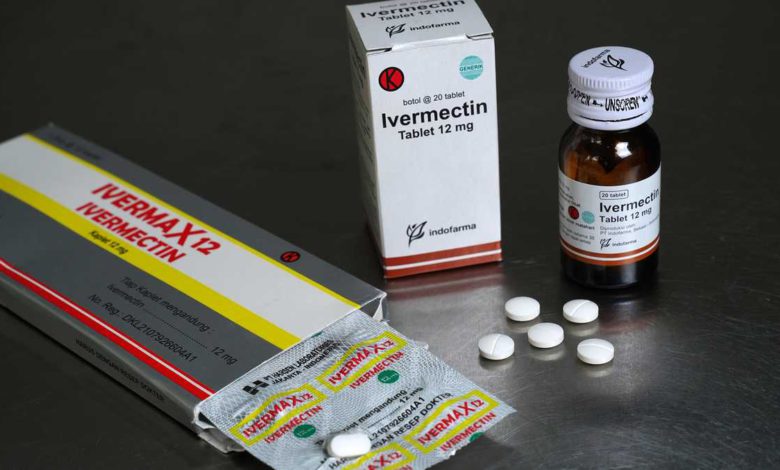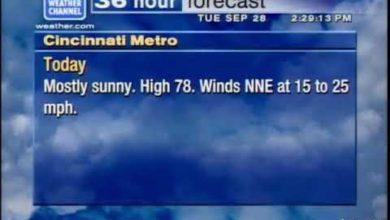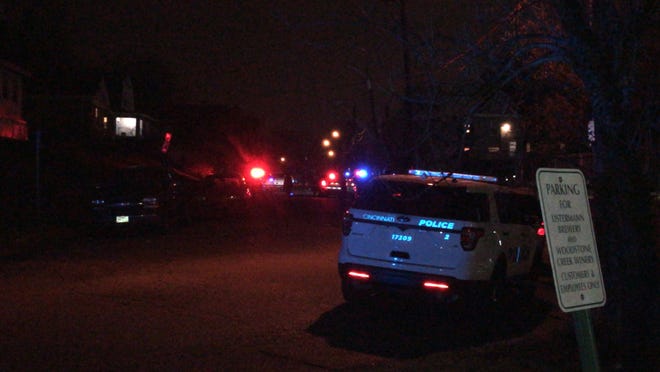

At age 14, Alexander Neville was still very much a curious kid. He was a Boy Scout who enjoyed getting outdoors and camping. He played with Legos and liked to skateboard. He slept with a stuffed Iron Man figure and still snuggled with a teddy bear he'd had since he was much younger.But about a year and a half ago, the middle schooler confessed to his parents about a very adult problem: He was experimenting with oxycodone, a prescription painkiller.He had no idea that the pills he was taking were actually prescription knockoffs laced with fentanyl, a synthetic opioid. Just a few milligrams of fentanyl can be a fatal dose.One morning in June 2020, his mother, Amy, found him dead in his bedroom."I went to his room, and he was blue, just laying on his beanbag chair. Just like he had gone to bed, you know, just like he had fallen asleep there," she said.Drug deaths more than doubleThough still rare, drug deaths among children ages 10 to 14 more than tripled from 2019 to 2020, according to an analysis done for CNN by the U.S. Centers for Disease Control and Prevention.Unintentional drug overdoses led to 200,000 years of lost life for U.S. preteens and teens who died between 2015 and 2019, a January study found. And experts suspect that the problem has gotten worse during the pandemic, research shows.The trend among adolescents follows a wider one.Annual drug overdose deaths have reached another record high in the United States, with an estimated 104,288 in the 12-month period ending September 2021, according to provisional data published Wednesday by the CDC's National Center for Health Statistics.That's double the number from six years prior; there were an estimated 52,000 drug overdose deaths annually in September 2015.The fentanyl factorAlexander Neville had gone to his parents to ask them for help just two days before he died. He told them he had started on the pills, in large part, because he was curious."He said, 'I got to tell you something. I wanted to experiment with oxy -- oxycodone. I looked up how much to take for my size, so I wouldn't get addicted. But it really has got a hold on me. And I don't know why,' " his mother said.His parents immediately made calls to get him into treatment."He really wanted to stop completely," Alexander's father, Aaron, recalled.Amy remembered, "He wanted to be done. He's like, 'I'm done. I thought this stuff was going to be fun, but it's not.' "But Alexander took that one last pill, unaware it was actually a deadly fake.Tests later showed that the pill had enough fentanyl in it to kill at least four people, according to a toxicology report that his parents obtained.Fentanyl is a drug intended to help people like cancer patients manage severe pain. It's 50 to 100 times more potent than morphine. But most overdose deaths aren't from using it legitimately; rather, they are linked to fentanyl made illegally. Four out of every 10 fake pills with fentanyl contain a potentially deadly dose, according to the Drug Enforcement Administration.Since 2013, a rise in opioid deaths involved illicitly made fentanyl, according to the CDC. The agency says dealers combine it with counterfeit prescription pills, cocaine and heroin.During the pandemic, the spike in deaths has increased significantly. From May 2020 through April 2021, more than 100,000 people of all ages died from drug overdoses in the US, according to the CDC. That's a record -- a near-30% rise from a year earlier and a near doubling over the past five years. Synthetic opioids like fentanyl accounted for the bulk of those deaths -- around 64,000."We're dealing with a different drug threat. Fentanyl has changed the game," DEA Special Agent Robert Murphy said. "I've been in law enforcement my entire adult life -- so it's 31 years now. And I've never seen a threat of the drug threat like the one we're dealing with now. It's frightening."Social media makes drug deals easySocial media may also contribute to the problem. Drug dealers no longer have to stand on streetcorners. They can now connect with kids online through platforms like Facebook, Instagram, Snapchat and YouTube, Murphy said.Alexander's parents believe that he got his fake pills through Snapchat. Another parent in the area got in touch to tell them that her son died two weeks after Alexander did, and she had screengrabs of a conversation believed to be with a drug dealer through Snapchat. There's still an investigation underway."The fentanyl epidemic has had a devastating effect on the lives of too many Americans, and our hearts go out to the families who have suffered unimaginable losses," a Snap spokesperson said in a statement to CNN."We share their outrage over how drug dealers have abused online platforms, including Snapchat, and are working tirelessly to eradicate them from our platform. We use tools to proactively detect drug-dealing activity and shut down dealers. To help inform our ongoing strategy and efforts, we work closely with a wide range of experts in counternarcotics, the law enforcement community, and government agencies, including the Drug Enforcement Agency, as well as with families. We are committed to bringing every resource to bear to fight this national crisis both on Snapchat and across the tech industry, particularly by raising awareness about the dangers of counterfeit pills laced with fentanyl."Buying drugs is as easy as planting a string of emojis on a social media platform to signal the interest in a sale, Murphy said. The DEA says drug traffickers and the criminal networks are there waiting for you.Dealers may reassure people that their pills are fentanyl-free, but there's no easy way to tell by looking at them, nor is it easy to know how much fentanyl is in them."That's why it could be a 'one pill kill,' because we don't know the dose," said Dr. Robert Bassett, assistant associate director of the Poison Control Center at Children's Hospital of Philadelphia. "It's like driving at night with your headlights off."The opioid overdose antidoteFentanyl has become such a big problem among young people that some schools have started keeping naloxone, an antidote to opioid overdoses that's available under the brand name Narcan, on hand.Hartford, Connecticut, is one example. In January, a 13-year-old boy died after collapsing in gym class at a Hartford school. Two other seventh-graders were taken to Connecticut Children's for treatment and evaluation. Police found 40 bags of fentanyl at the school and 100 bags in boy's bedroom.On Tuesday, the American Medical Association encouraged the Biden administration to remove the prescription status of naloxone to make it more easily available over the counter.All 50 states and the District of Columbia have some form of naloxone access laws that allow for the prescribing and dispensing of the treatment to substance users vulnerable to overdose and to nonmedical first responders like family and friends, according to the Legislative Analysis and Public Policy Association. As of 2020, at least 20 states allow schools to possess naloxone and administer it, but they are not required to do so.How to get helpThough the experts say there are not enough counselors and treatment programs for preteens and teens, there are treatment programs that work for adolescents.The first step in successful treatment is recognition. Parents need to stay vigilant for changes in a child's behavior, which may be an early sign that they're using drugs.The changes can be subtle at first, Bassett said. They may not hang out with the same friends or may stop showing interest in favorite activities. They may be angry or sleep more. But parents need to talk to their kids about it -- even middle schoolers -- and do it more than once."This is not a 'one conversation and forget it.' This is something you're going to have to just pound in terms of every night at the kitchen table," Murphy said.Children's brains aren't fully formed, and their risk-reward centers may not help them make the right choices all the time. "They're the perfect, most vulnerable population," Bassett said.Bassett recommends that parents check with the National Institute on Drug Abuse for resources. They can also call Poison Control at (800) 222-1222 for free inforrmation.Medication-assisted treatment is considered more effective than abstinence, Bassett said. Wraparound services, individualized treatment to help the child and family, can include peer counseling and drug rehabilitation. And, Bassett said, it may be important to address underlying issues that lead the child to experiment with the drugs in the first place."There may be unmet psychological conditions that force people into self-medicating," Bassett said. "They're just looking not to suffer."
At age 14, Alexander Neville was still very much a curious kid. He was a Boy Scout who enjoyed getting outdoors and camping. He played with Legos and liked to skateboard. He slept with a stuffed Iron Man figure and still snuggled with a teddy bear he'd had since he was much younger.
But about a year and a half ago, the middle schooler confessed to his parents about a very adult problem: He was experimenting with oxycodone, a prescription painkiller.
He had no idea that the pills he was taking were actually prescription knockoffs laced with fentanyl, a synthetic opioid. Just a few milligrams of fentanyl can be a fatal dose.
One morning in June 2020, his mother, Amy, found him dead in his bedroom.
"I went to his room, and he was blue, just laying on his beanbag chair. Just like he had gone to bed, you know, just like he had fallen asleep there," she said.
Drug deaths more than double
Though still rare, drug deaths among children ages 10 to 14 more than tripled from 2019 to 2020, according to an analysis done for CNN by the U.S. Centers for Disease Control and Prevention.
Unintentional drug overdoses led to 200,000 years of lost life for U.S. preteens and teens who died between 2015 and 2019, a January study found. And experts suspect that the problem has gotten worse during the pandemic, research shows.
The trend among adolescents follows a wider one.
Annual drug overdose deaths have reached another record high in the United States, with an estimated 104,288 in the 12-month period ending September 2021, according to provisional data published Wednesday by the CDC's National Center for Health Statistics.
That's double the number from six years prior; there were an estimated 52,000 drug overdose deaths annually in September 2015.
The fentanyl factor
Alexander Neville had gone to his parents to ask them for help just two days before he died. He told them he had started on the pills, in large part, because he was curious.
"He said, 'I got to tell you something. I wanted to experiment with oxy -- oxycodone. I looked up how much to take for my size, so I wouldn't get addicted. But it really has got a hold on me. And I don't know why,' " his mother said.
His parents immediately made calls to get him into treatment.
"He really wanted to stop completely," Alexander's father, Aaron, recalled.
Amy remembered, "He wanted to be done. He's like, 'I'm done. I thought this stuff was going to be fun, but it's not.' "
But Alexander took that one last pill, unaware it was actually a deadly fake.
Tests later showed that the pill had enough fentanyl in it to kill at least four people, according to a toxicology report that his parents obtained.
Fentanyl is a drug intended to help people like cancer patients manage severe pain. It's 50 to 100 times more potent than morphine. But most overdose deaths aren't from using it legitimately; rather, they are linked to fentanyl made illegally. Four out of every 10 fake pills with fentanyl contain a potentially deadly dose, according to the Drug Enforcement Administration.
Since 2013, a rise in opioid deaths involved illicitly made fentanyl, according to the CDC. The agency says dealers combine it with counterfeit prescription pills, cocaine and heroin.
During the pandemic, the spike in deaths has increased significantly. From May 2020 through April 2021, more than 100,000 people of all ages died from drug overdoses in the US, according to the CDC. That's a record -- a near-30% rise from a year earlier and a near doubling over the past five years. Synthetic opioids like fentanyl accounted for the bulk of those deaths -- around 64,000.
"We're dealing with a different drug threat. Fentanyl has changed the game," DEA Special Agent Robert Murphy said. "I've been in law enforcement my entire adult life -- so it's 31 years now. And I've never seen a threat of the drug threat like the one we're dealing with now. It's frightening."
Social media makes drug deals easy
Social media may also contribute to the problem. Drug dealers no longer have to stand on streetcorners. They can now connect with kids online through platforms like Facebook, Instagram, Snapchat and YouTube, Murphy said.
Alexander's parents believe that he got his fake pills through Snapchat. Another parent in the area got in touch to tell them that her son died two weeks after Alexander did, and she had screengrabs of a conversation believed to be with a drug dealer through Snapchat. There's still an investigation underway.
"The fentanyl epidemic has had a devastating effect on the lives of too many Americans, and our hearts go out to the families who have suffered unimaginable losses," a Snap spokesperson said in a statement to CNN.
"We share their outrage over how drug dealers have abused online platforms, including Snapchat, and are working tirelessly to eradicate them from our platform. We use tools to proactively detect drug-dealing activity and shut down dealers. To help inform our ongoing strategy and efforts, we work closely with a wide range of experts in counternarcotics, the law enforcement community, and government agencies, including the Drug Enforcement Agency, as well as with families. We are committed to bringing every resource to bear to fight this national crisis both on Snapchat and across the tech industry, particularly by raising awareness about the dangers of counterfeit pills laced with fentanyl."
Buying drugs is as easy as planting a string of emojis on a social media platform to signal the interest in a sale, Murphy said. The DEA says drug traffickers and the criminal networks are there waiting for you.
Dealers may reassure people that their pills are fentanyl-free, but there's no easy way to tell by looking at them, nor is it easy to know how much fentanyl is in them.
"That's why it could be a 'one pill kill,' because we don't know the dose," said Dr. Robert Bassett, assistant associate director of the Poison Control Center at Children's Hospital of Philadelphia. "It's like driving at night with your headlights off."
The opioid overdose antidote
Fentanyl has become such a big problem among young people that some schools have started keeping naloxone, an antidote to opioid overdoses that's available under the brand name Narcan, on hand.
Hartford, Connecticut, is one example. In January, a 13-year-old boy died after collapsing in gym class at a Hartford school. Two other seventh-graders were taken to Connecticut Children's for treatment and evaluation. Police found 40 bags of fentanyl at the school and 100 bags in boy's bedroom.
On Tuesday, the American Medical Association encouraged the Biden administration to remove the prescription status of naloxone to make it more easily available over the counter.
All 50 states and the District of Columbia have some form of naloxone access laws that allow for the prescribing and dispensing of the treatment to substance users vulnerable to overdose and to nonmedical first responders like family and friends, according to the Legislative Analysis and Public Policy Association. As of 2020, at least 20 states allow schools to possess naloxone and administer it, but they are not required to do so.
How to get help
Though the experts say there are not enough counselors and treatment programs for preteens and teens, there are treatment programs that work for adolescents.
The first step in successful treatment is recognition. Parents need to stay vigilant for changes in a child's behavior, which may be an early sign that they're using drugs.
The changes can be subtle at first, Bassett said. They may not hang out with the same friends or may stop showing interest in favorite activities. They may be angry or sleep more. But parents need to talk to their kids about it -- even middle schoolers -- and do it more than once.
"This is not a 'one conversation and forget it.' This is something you're going to have to just pound in terms of every night at the kitchen table," Murphy said.
Children's brains aren't fully formed, and their risk-reward centers may not help them make the right choices all the time. "They're the perfect, most vulnerable population," Bassett said.
Bassett recommends that parents check with the National Institute on Drug Abuse for resources. They can also call Poison Control at (800) 222-1222 for free inforrmation.
Medication-assisted treatment is considered more effective than abstinence, Bassett said. Wraparound services, individualized treatment to help the child and family, can include peer counseling and drug rehabilitation. And, Bassett said, it may be important to address underlying issues that lead the child to experiment with the drugs in the first place.
"There may be unmet psychological conditions that force people into self-medicating," Bassett said. "They're just looking not to suffer."
Source link







